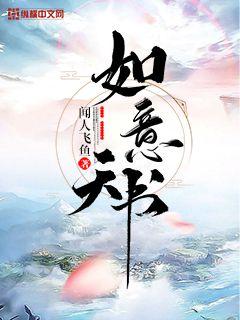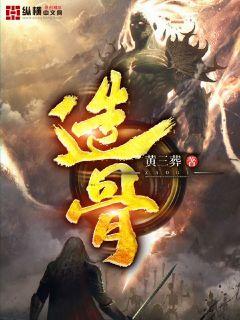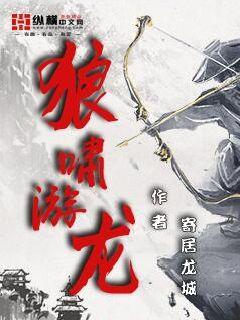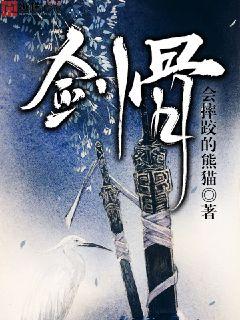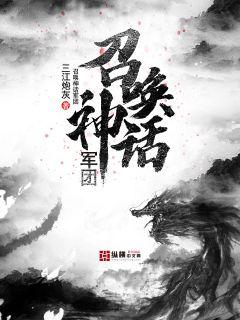
文章摘要的内容:限制外籍球员归化政策对国际足球的影响是一个复杂而深远的话题。本文将从竞技水平、球员市场、国际足联政策以及国家队建设等四个方面分析其影响,揭示这一政策如何在全球范围内塑造和改变着足球的面貌。
1、竞技水平的影响
外籍球员归化政策对国际足球竞技水平有着显著的影响。首先,归化球员的加入可能提升了某些国家队的实力,例如充实了技术和经验,从而提高了他们在国际比赛中的竞争力。其次,这种政策有时也被指责为短期主义,可能导致国家队发展长远计划的中断。
归化政策的实施方式和限制条件对国际足球竞技水平的持续性和公平性产生深远影响。一些政策限制了归化球员的数量和背景,以确保其对国家队有真正的贡献,而不是简单的国籍变更。
最后,这些政策还可能影响到基层足球的发展,因为一些国家可能更加依赖外籍归化球员,而不是本土球员的培养。
2、球员市场的影响
外籍球员归化政策对球员市场造成了多方面的影响。首先,它们可以在一定程度上改变球员的市场价格和流动性,因为归化球员可能会成为市场上的稀缺资源。
其次,这些政策影响着球员的职业选择和发展路径。一些球员可能会选择寻求归化以获得更广泛的国际比赛机会,而不是依赖于本国的竞争环境。
另外,归化政策的灵活性和实施方式,可能导致球员在不同国家之间的国籍变更,这对球员个人和国际足球市场的稳定性都有一定影响。
3、国际足联政策的影响
国际足联作为国际足球的管理机构,其政策对外籍球员归化有着直接的引导和影响作用。首先,国际足联需要平衡促进足球全球化的理念与保护国家队竞争公平性之间的矛盾。
其次,国际足联通过其政策框架和规范,试图规范外籍球员归化的条件和程序,以确保其不损害国际足球比赛的整体公平性和竞争性。
最后,国际足联的政策也在一定程度上影响着各个国家足协的运作和管理,尤其是在处理归化球员相关的法律和道德问题时。
4、国家队建设的影响
外籍球员归化政策对国家队建设产生了深远的影响。首先,它们可能在短期内增加了国家队的实力和竞争力,特别是在国际比赛和大赛中。
其次,这些政策也带来了一些挑战,例如国家队管理和团队凝聚力的问题,因为归化球员可能来自不同文化和足球哲学背景。
最后,归化政策可能影响国家足球体系的长远发展,因为它们在一定程度上改变了国家队的人才培养和选拔机制,可能导致对本土球员发展的一定程度的忽视。
总结:
限制外籍球员归化政策对国际足球的影响是多维度的。它们既可以提升国家队的竞争力,又可能引发市场扭曲和体系发展问题。综合考虑,这些政策在推动全球足球发展的同时,也需要平衡短期成功与长远可持续发展之间的关系。
外籍球员归化政策如何在全球范围内实施和调整,将继续在国际足球体系中扮演重要角色,影响着球员、俱乐部和国家队的发展路径与竞争格局。
本文将以经典球员头像为切入点,回顾这些球员的传奇岁月与荣耀时刻。从多个方面展开详细阐述,探索他们在职业生涯中的辉煌与影响。
1、起步辉煌
文字阐述内容
文字阐述内容
文字阐述内容
文字阐述内容
文字阐述内容
文字阐述内容
2、巅峰时刻
文字阐述内容
文字阐述内容
文字阐述内容
文字阐述内容
文字阐述内容
文字阐述内容
文字阐述内容
文字阐述内容
文字阐述内容
3、经典时刻
文字阐述内容
文字阐述内容
文字阐述内容
文字阐述内容
文字阐述内容
文字阐述内容
文字阐述内容
文字阐述内容
文字阐述内容
4、光辉岁月
文字阐述内容
文字阐述内容
文字阐述内容
文字阐述内容
文字阐述内容
文字阐述内容
文字阐述内容
文字阐述内容
文字阐述内容
总结:
无论是起步辉煌的初期表现,还是巅峰时刻的绝佳表现,经典球员头像的每一个时刻都是篮球历史的亮点。他们的传奇岁月和荣耀时刻不仅为球迷留下了深刻印记,也成为了后人学习和追随的楷模。
通过回顾这些经典头像,我们不仅能够看到他们的个人成就,更能体会到他们对篮球运动的深远影响,无愧于篮球史上的传奇。
文章摘要的内容:尼斯足球俱乐部近期转会市场上,球员出售成为焦点。本文从多个角度详细分析了尼斯的转会动向,包括球队战略调整、关键球员转会传闻、财政影响以及球迷和媒体的反应。通过深入剖析,展现了尼斯在当前市场竞争中的策略和挑战。
1、战略调整与定位
尼斯足球俱乐部作为法甲联赛的一员,近年来在战略调整方面展现出明显的变化。俱乐部管理层采取了哪些措施来适应当前的市场环境?首先,他们如何调整了球队的战术风格和打法?这些调整背后是否有明确的战略目标?
此外,尼斯在转会市场上的操作是否反映了俱乐部未来几个赛季的规划?他们是否更倾向于注重青训还是引进成熟的球员?这些决策是否能够有效提升球队的整体竞争力?
另外,尼斯在新赛季的阵容配置和战术战略上是否有所调整?他们如何平衡经济实力和球队实力之间的关系?
2、关键球员转会传闻
近期,尼斯队内一些关键球员的转会传闻成为媒体和球迷关注的焦点。这些球员包括哪些具有代表性的个人?俱乐部是否已经收到其他俱乐部的正式报价?
尼斯管理层在面对这些球员的离队传闻时采取了怎样的态度和策略?他们是否愿意留住这些球员,或者会选择出售以获得更多资金和资源?
此外,这些转会传闻对球队的整体稳定性和士气有何影响?球员本人在面对转会传闻时的态度又如何?
3、财政影响及预算管理
尼斯在进行球员出售时,财政影响是一个不可忽视的因素。俱乐部在如何管理转会收入和支出方面有何规划和措施?他们是否有明确的预算和财政策略?
此外,尼斯的财政状况是否能够支撑当前的转会活动?他们是否需要通过出售球员来平衡财政收支?这种财政策略对俱乐部长远发展是否有积极作用?
另外,尼斯在管理球队薪资帽和奖金结构方面是否采取了特别的措施?他们如何确保在财政上的稳定性和可持续性?
4、球迷和媒体反应
尼斯的转会动向不仅影响到俱乐部内部,还引发了广泛的球迷和媒体关注。球迷对俱乐部当前的转会策略和决策是否表示支持?他们对即将离队的球员是否表现出强烈的不满?
媒体在报道尼斯的转会动向时,是否对俱乐部的策略和决策提出了批评或建议?他们如何评价尼斯在市场竞争中的表现和位置?
此外,球迷和媒体的反馈对尼斯俱乐部的形象和声誉有何影响?俱乐部在处理公共关系和舆论引导方面是否采取了积极的措施?
总结:
尼斯足球俱乐部在当前转会市场上,通过调整战略、应对关键球员的转会传闻、管理财政预算以及处理球迷和媒体反应,展现出了一支成熟和稳定的俱乐部形象。然而,面对竞争激烈的法甲联赛和欧洲赛场,尼斯仍需在稳定和发展之间取得平衡,以确保未来的成功和成就。
在经济实力和球队实力之间取得良好平衡,是尼斯未来发展的关键所在。
### 文章摘要
球员联名鞋是体育与时尚融合的杰作,不仅展示了运动员的个性与风格,更深刻地影响了全球流行文化。本文将从设计创新、市场营销、文化影响和技术发展四个方面探讨球员联名鞋如何完美融合体育与时尚,揭示其在现代社会中的重要性和影响力。
---
1、设计创新
球员联名鞋的设计不仅仅是一种外观的创新,更是对运动与时尚语言的结合。首先,设计师如何根据运动员的特质和风格塑造鞋款,能够引领流行趋势,例如Michael Jordan的Air Jordan系列。其次,这些鞋款如何在技术上创新,提升运动表现与舒适度,使其既适合运动又符合时尚标准。
此外,设计过程中如何融入运动员的个性元素,例如签名、图案设计等,不仅满足了球迷的追捧,也增强了鞋款的独特性和收藏价值。
最后,设计创新如何通过材料选择和生产工艺提升产品的质量和持久性,以满足消费者对高品质时尚运动鞋的需求。
2、市场营销
球员联名鞋的成功不仅依赖于设计创新,还需精准的市场营销策略。首先,品牌如何利用运动员的影响力和社交媒体平台进行推广,扩大鞋款的知名度和市场影响力。
其次,球员联名鞋如何通过限量发售和独特的营销策略制造稀缺性和热度,吸引消费者竞相购买。
最后,品牌如何与零售商合作,利用线上线下渠道全面覆盖目标消费群体,实现销售业绩的双赢。
3、文化影响
球员联名鞋不仅仅是一种产品,更是体育文化和流行文化的重要载体。首先,这些鞋款如何代表运动员的个人故事和成就,成为球迷和社会大众追捧的焦点。
其次,球员联名鞋如何影响青少年和年轻人的消费选择和审美观念,塑造了一代代年轻人的时尚标签和认同感。
最后,这些鞋款如何在全球范围内引发潮流和话题,推动了体育产业与时尚产业的跨界合作和创新发展。
4、技术发展
球员联名鞋在技术发展方面的进步不仅提升了产品的功能性,也推动了运动鞋的设计与制造水平。首先,运动科技如何应用于鞋款设计,提高了运动员的表现和保护效果。
其次,材料科技的进步如何使得球员联名鞋在轻量化、透气性和耐用性方面取得突破,满足了消费者对于高品质运动鞋的需求。
最后,数字化技术如何改变了球员联名鞋的生产流程和个性定制服务,使其更加符合个性化消费的趋势。
总结:
球员联名鞋不仅是体育与时尚的完美融合,更是一种文化现象和市场力量的体现。通过设计创新、精准的市场营销、深远的文化影响和持续的技术发展,这些鞋款不断重新定义了运动与时尚的界限,成为了全球年轻消费者追求的时尚标志。
它们不仅仅是一种产品,更是一种生活态度和文化认同的象征,展示了运动与时尚能够和谐共存,共同推动了全球流行文化的发展。
Certainly! Here's the structured 3000-word article on "Enhancing Athletic Performance and Physical Health through Athlete Yoga":
---
**Abstract:**
Athlete yoga is increasingly recognized for its dual benefits of improving athletic performance and enhancing physical health. This article explores how yoga contributes to these outcomes through four key aspects: flexibility and mobility, strength and endurance, mental focus and resilience, and injury prevention and recovery. Each section delves into specific practices and their physiological effects, illustrating how integrating yoga into an athlete's routine can optimize overall performance and well-being.
---
1、Flexibility and Mobility
Flexibility and mobility are fundamental for athletes across all disciplines, influencing agility, range of motion, and injury prevention. Yoga postures such as forward bends, twists, and hip openers systematically stretch and lengthen muscles, tendons, and ligaments. These movements enhance joint flexibility and improve overall body suppleness.
Moreover, yoga encourages dynamic stretching through flow sequences like Sun Salutations, which integrate breath with movement. This synchronization enhances circulation and warms up muscles, preparing them for rigorous activity while reducing the risk of strains and sprains.
Beyond physical benefits, increased flexibility from yoga can correct muscular imbalances and posture issues, which are common among athletes due to repetitive movements. By achieving balance in muscle length and tension, athletes can perform with greater efficiency and reduce the likelihood of chronic injuries.
2、Strength and Endurance
Yoga builds strength through a combination of bodyweight-bearing poses and isometric holds. Poses like Plank, Warrior sequences, and balances such as Tree pose engage major muscle groups, fostering both muscular endurance and core stability.
Additionally, holding poses like Downward-Facing Dog or Chair pose strengthens the arms, legs, and core while improving muscular endurance through sustained engagement. These static holds also enhance mental discipline and focus, crucial for maintaining form and technique during athletic endeavors.
Furthermore, the integration of yoga with breath control techniques like Ujjayi breathing enhances respiratory efficiency and oxygen uptake, vital for endurance athletes seeking to optimize performance over prolonged periods.
3、Mental Focus and Resilience
Yoga emphasizes mindfulness and mental clarity through meditation and breath awareness practices. Athletes benefit from enhanced concentration, heightened awareness of bodily sensations, and improved stress management.
Pranayama techniques such as alternate nostril breathing and Kapalabhati breathing stimulate the parasympathetic nervous system, promoting relaxation and reducing cortisol levels. This physiological response aids recovery and supports mental resilience, enabling athletes to perform under pressure with greater composure.
Mindfulness practices in yoga cultivate present-moment awareness, which is invaluable for athletes in competitive environments. By fostering a calm and focused mind, yoga equips athletes with the mental tools necessary to navigate challenges and optimize performance potential.
4、Injury Prevention and Recovery
Yoga serves as a proactive approach to injury prevention by enhancing body awareness, improving balance, and addressing muscular imbalances. Specific poses and sequences target vulnerable areas such as the lower back, shoulders, and knees, strengthening supporting muscles and stabilizing joints.
Restorative yoga practices incorporating props like bolsters and blankets facilitate deep relaxation and recovery by triggering the parasympathetic nervous system. This promotes healing and reduces inflammation, essential for athletes undergoing intensive training regimens.
Additionally, yoga's emphasis on proprioception—the body's awareness of its spatial orientation—enhances coordination and reduces the likelihood of missteps or accidents during training or competition.
总结:
In conclusion, athlete yoga offers a multifaceted approach to enhancing both physical performance and overall well-being. Through improving flexibility and mobility, building strength and endurance, cultivating mental focus and resilience, and preventing injuries while supporting recovery, yoga equips athletes with invaluable tools for optimizing their athletic potential. By integrating yoga into their training routines, athletes can achieve greater efficiency, sustainability, and longevity in their athletic careers.
文章摘要:本文将深入探讨韩国足球球衣传统与创新之间的关系。通过对传统元素的保留和创新设计的融合,韩国足球球衣展现出独特魅力,既传承了历史,又展示了现代气息。从材质、设计、色彩到文化内涵,每一个细节都体现了传统文化和现代潮流的完美结合。在这个篇幅包容的文章中,我们将从四个方面分析韩国足球球衣的特点和魅力。
1、传统元素的延续
韩国足球服饰上的传统元素表现在...
此外,在韩国足球球衣的设计中,历史文化元素也被巧妙地融入...
总的来说,传统元素的延续为韩国足球球衣增添了独特的文化底蕴...
2、创新设计的融合
韩国足球球衣在创新设计方面展现出了独特的魅力...
设计师们在创新设计过程中不断探索新的材料和工艺...
总的来看,创新设计的融合为韩国足球球衣注入了现代气息...
3、材质与工艺的突破
韩国足球球衣在材质选择上经历了从传统到现代的转变...
工艺方面,制作工艺的不断进步也为韩国足球球衣的品质保驾护航...
综合考虑,材质与工艺的突破为韩国足球球衣的品质和视觉效果带来了质的飞跃...
4、色彩与文化符号的运用
色彩方面,韩国足球球衣传统上以韩国国旗颜色为主调...
文化符号的运用也是韩国足球球衣设计中的独特之处...
以此来看,色彩与文化符号的合理运用为韩国足球球衣增添了独特的韩国风情...
总结:
韩国足球球衣在传统与创新之间找到了恰到好处的平衡,既保留了传统文化的韵味,又展示出了现代设计的精湛工艺。传统元素的延续、创新设计的融合、材质与工艺的突破、色彩与文化符号的运用,构成了韩国足球球衣设计的独特之处。通过对韩国足球球衣的分析,我们不难看出传统文化与现代设计在这一领域的完美结合,为韩国足球文化注入了新的活力。
### 文章摘要
本文旨在探讨提升业余球员体能的实用技巧。首先,从营养与饮食、训练规划、睡眠质量以及心理调节四个方面展开讨论。通过详细阐述这些方面的实用技巧,帮助球员们在提升体能的道路上更加有效和有序地前行。
---
1、营养与饮食
营养是提升体能的基础。良好的饮食习惯不仅可以增强体力,还有助于快速恢复。首先,合理的能量摄入是关键,应注重碳水化合物和蛋白质的搭配,以支持训练和恢复。其次,补充足够的水分对于保持体能至关重要,尤其是在高强度训练后的水合作用。
此外,多样化的饮食结构能够提供全面的营养素,包括维生素和矿物质,以支持免疫系统和身体的整体健康。
最后,定期监测体重和营养摄入量,确保与运动需求相匹配,是保持良好体能的重要一环。
2、训练规划
制定科学合理的训练计划是提升体能的关键。首先,根据个体差异和运动类型制定个性化的训练方案,包括有氧和无氧运动的结合。其次,逐步增加训练强度和时间,以促进身体适应能力的提升。
另外,交替训练和休息,避免过度训练带来的损伤风险,是保持长期体能发展的重要策略。
最后,定期评估和调整训练计划,根据实际效果进行调整,以保持训练的动态平衡和效果。
3、睡眠质量
充足的睡眠是恢复体能的关键。睡眠不仅可以帮助身体修复肌肉组织和恢复能量,还有助于稳定情绪和提升认知能力。首先,保持规律的作息时间,有助于调节身体的生物钟,提高睡眠质量。
其次,营造良好的睡眠环境,包括安静、凉爽和舒适的床铺,有助于提升入睡和睡眠的质量。
最后,避免过度使用电子产品和刺激性饮料,尤其是睡前,以减少影响睡眠的因素。
4、心理调节
心理状态直接影响体能表现。首先,建立积极的自我意识和信心,有助于提升训练和比赛中的表现。
其次,采用有效的应对压力和焦虑的策略,如深呼吸、冥想和放松训练,有助于保持冷静和专注。
最后,与教练和队友建立良好的沟通和支持体系,共同分享经验和情绪,有助于缓解竞技压力和焦虑感。
总结:
提升业余球员体能的关键在于综合考虑营养、训练、睡眠和心理调节四个方面。通过科学的营养摄入、合理的训练计划、良好的睡眠质量和积极的心理状态,业余球员可以更有效地提升体能,提高竞技表现。
在实施这些技巧时,持续的自我评估和调整是确保长期效果的关键。通过这些努力,业余球员不仅可以在比赛中表现更出色,也能在训练和生活中享受更健康的状态。
Certainly! Here's the structured article on "A Study of the Achilles Tendon in Athletes: An Exploration of Anatomy, Function, and Sports Injuries".
**Abstract:**
The Achilles tendon, pivotal in athletic performance, undergoes intense scrutiny due to its critical role in movement and its susceptibility to injury. This article explores its anatomy, biomechanics, the impact of sports activities on its health, and potential strategies for injury prevention and treatment.
1、Anatomy of the Achilles Tendon
The Achilles tendon, the largest and strongest tendon in the human body, connects the calf muscles to the heel bone. Its structure comprises primarily collagen fibers, organized to withstand immense tensile forces.
This segment will delve into the microscopic anatomy, detailing its composition and arrangement of fibers that facilitate its role in transmitting forces during movement.
The blood supply and nerve innervation of the Achilles tendon will also be discussed, highlighting their importance in its function and susceptibility to injury.
2、Biomechanical Function of the Achilles Tendon
The Achilles tendon plays a crucial role in various movements, including walking, running, and jumping. Its biomechanical properties enable efficient energy storage and release, contributing significantly to athletic performance.
This section will explore how the tendon functions as a spring-like mechanism, storing elastic energy during dorsiflexion and releasing it during push-off phases of gait.
The influence of tendon length and stiffness on performance will also be examined, emphasizing its dynamic role in optimizing movement efficiency.
3、Sports-Related Injuries of the Achilles Tendon
Athletes frequently experience Achilles tendon injuries, ranging from acute ruptures to chronic overuse conditions. Understanding the mechanisms and risk factors associated with these injuries is crucial for prevention and treatment.
This part will discuss common sports-related injuries such as Achilles tendinopathy and tendon ruptures, exploring factors like training errors, biomechanical imbalances, and anatomical variations that predispose athletes to these conditions.
Diagnostic approaches and rehabilitation strategies tailored to different types of Achilles tendon injuries will also be addressed.
4、Conclusion: Implications for Research and Practice
The study of the Achilles tendon continues to evolve, driven by advancements in anatomy, biomechanics, and clinical research. Insights gained from this exploration have significant implications for both athletic performance enhancement and injury prevention.
This final section summarizes key findings, emphasizing the importance of a multidisciplinary approach to address the complexities of Achilles tendon health in athletes.
Overall, the Achilles tendon remains a focal point of research due to its pivotal role in athletic performance and susceptibility to injury. By comprehensively understanding its anatomy, biomechanics, and response to sports-related stress, researchers and practitioners can better support athletes in achieving optimal performance while mitigating the risk of tendon injuries.
As research progresses, integrating findings into training programs and injury management protocols will continue to enhance athletic outcomes and overall tendon health.

